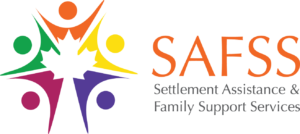This piece explores the specific issue of reproductive abuse in Canada and how for many, this may feel disconnected from the liberal image as Canada presents itself. However, reproductive abuse or coercion has and continues to affect thousands of women, girls, men, and gender non-conforming folks across this country.
The Canadian Women’s Foundation defines reproductive abuse, or reproductive coercion, as “any time someone pressures another person about their reproductive decision-making or takes steps that make it harder for that person to freely exercise their reproductive choice(s).” This can include, but not limited to, “removing a condom during sex without their partner’s consent or knowledge, destroying or purposefully hiding birth control pills, poking holes in a condom, lying about having a vasectomy or tubal ligation, pushing a partner to have sex during certain times in their reproductive cycle, or pressuring someone into a pregnancy or abortion they don’t want.”
However, while this term is a relatively new addition to the gender-based violence discourse, it is important to note, as established by the United Nations, that reproductive abuse is a human rights violation that can happen at the individual level and through institutional systems.
Virdi (2018) discussed how reproductive abuse stems from eugenics, and it was demonstrated by Nazi Germany where “racial hygiene” was maintained that solely white people with desirable, perfect features or attributes should reproduce – similar discriminatory and racist policies are demonstrated in Canadian history. Notably, Virdi (2018) continues to note that Alberta and British Columbia had sterilization policies in 1933 and at least three thousand men and women with different mental health issues were sterilized without proper consent given.
Furthermore, Indigenous women and girls have shared experiences of experiencing nonconsensual sterilization in Canadian institutions, particularly in hospitals. Virdi (2018) shares that this is primarily shaped by colonial discourses and harmful stereotypes perpetuated by Canadian settlers that Indigenous women are sexually promiscuous or immoral – implying that the actions done by the institution are justified.
Similarly, in the same piece, Stote (2015), argued that sterilization was justified based on reducing the birth rate and that it would lower the “extent of the federal government’s obligation to Indigenous Peoples.” While this may seem disconnected to Canada’s current image – Dyck (2018) writes how some stories of nonconsensual sterilization have been shared as recently as 2017.
Reproductive abuse or coercion should not be treated as a new phenomenon, this has been historically and actively happening across the country and Violence Against Women (VAW) counselors have been at the forefront of assisting survivors through different forms of abuse. Since the establishment of SAFSS in 1989, VAW counselors have been working with survivors to address and combat these issues.
As Canada has a dark history of reproductive abuse, we must hold institutions and people accountable for their actions. Particularly since Canada is a signatory and an active member of the United Nations – practices of any form of gender-based violence are not acceptable and directly contradict the image of the nation.
Considering how it is incredibly difficult for survivors to come forward with their stories concerning gender-based violence – I cannot imagine the strength and vulnerability of survivors speaking about their stories, particularly at the institutional level. As with all stories and forms of gender-based violence, we must believe and hear survivors and enact direct policies that are especially trauma-informed to combat and end these forms of violence.
